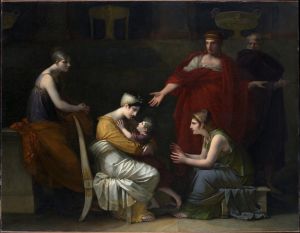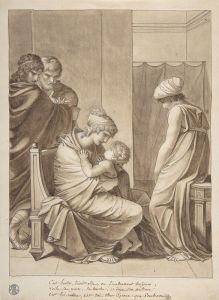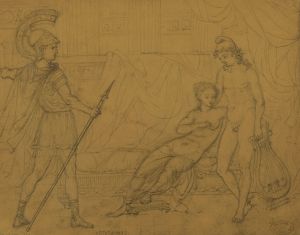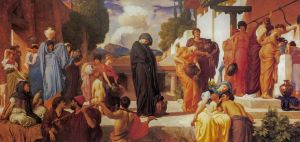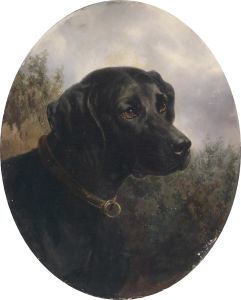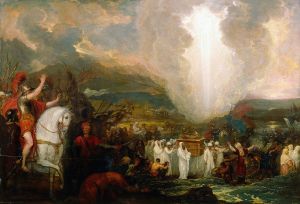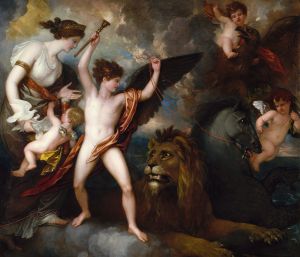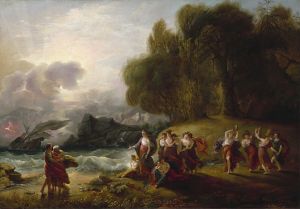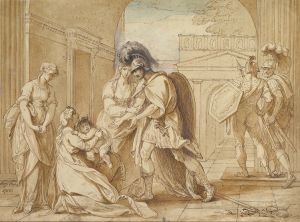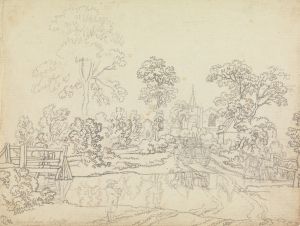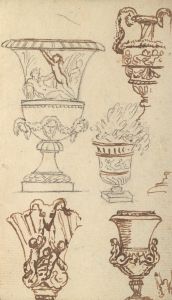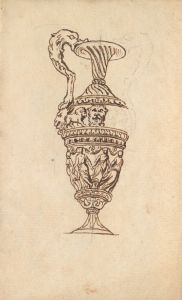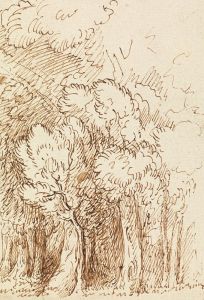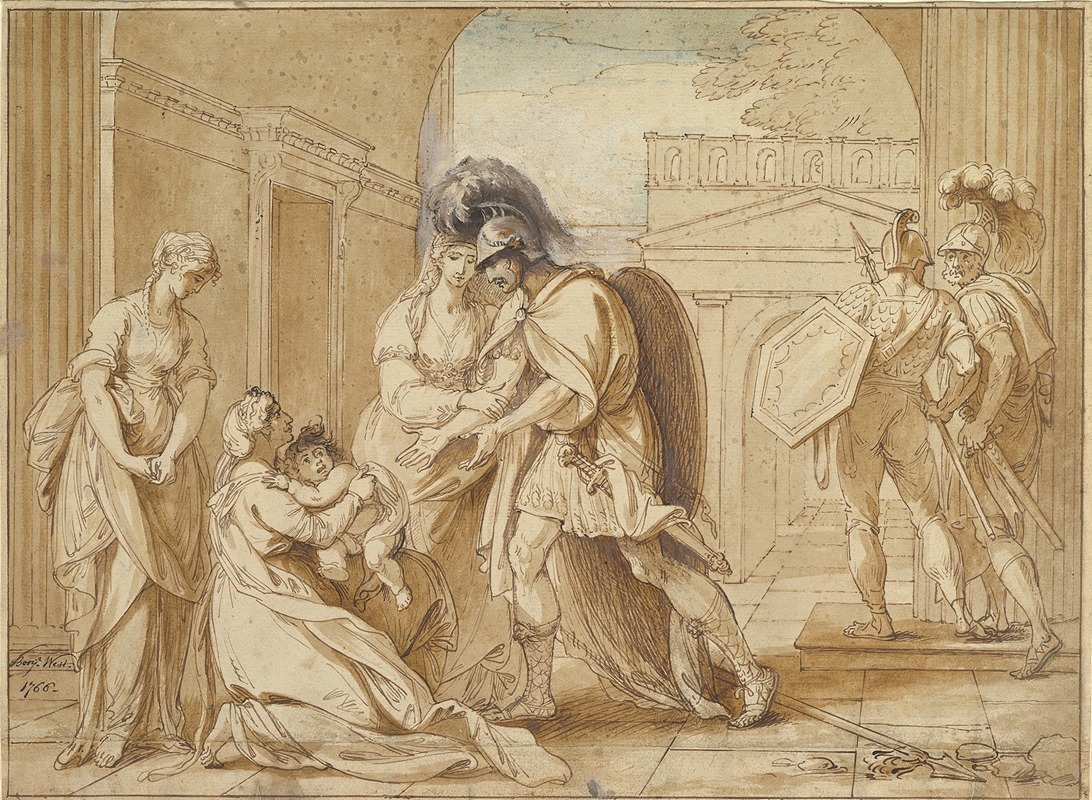
Hector taking leave of Andromache; the Fright of Astyanax
A hand-painted replica of Benjamin West’s masterpiece Hector taking leave of Andromache; the Fright of Astyanax, meticulously crafted by professional artists to capture the true essence of the original. Each piece is created with museum-quality canvas and rare mineral pigments, carefully painted by experienced artists with delicate brushstrokes and rich, layered colors to perfectly recreate the texture of the original artwork. Unlike machine-printed reproductions, this hand-painted version brings the painting to life, infused with the artist’s emotions and skill in every stroke. Whether for personal collection or home decoration, it instantly elevates the artistic atmosphere of any space.
Benjamin West's painting "Hector Taking Leave of Andromache; the Fright of Astyanax" is a significant work that captures a poignant moment from classical mythology, specifically from Homer's epic poem, the "Iliad." Created in the 18th century, this painting reflects West's neoclassical style and his interest in historical and mythological subjects.
Benjamin West (1738–1820) was an American-born artist who spent much of his career in Britain. He became a prominent figure in the art world, eventually serving as the second president of the Royal Academy in London. West was known for his historical paintings, which often depicted scenes from classical antiquity, the Bible, and contemporary events.
The painting portrays a scene from the "Iliad," where Hector, the Trojan prince and a central character in the epic, bids farewell to his wife Andromache and their young son Astyanax. This moment is charged with emotion, as Hector is preparing to return to battle, fully aware of the potential consequences. The scene is a testament to Hector's duty and honor, as well as the personal sacrifices made by those involved in war.
In the composition, West captures the emotional tension of the moment. Hector is depicted in armor, symbolizing his role as a warrior, while Andromache is shown in a state of distress, clutching their child. Astyanax, the young son, is frightened by the sight of his father in battle gear, adding another layer of emotional complexity to the scene. The painting effectively conveys the themes of love, duty, and the human cost of war.
West's use of color and light in the painting enhances the emotional impact. The figures are rendered with a sense of realism and attention to detail, characteristic of West's neoclassical approach. The composition is carefully balanced, with the figures arranged to draw the viewer's eye to the central emotional exchange between Hector and Andromache.
This painting is an example of West's ability to bring classical themes to life with a sense of immediacy and relevance. It reflects the 18th-century fascination with classical antiquity and the moral and philosophical questions posed by these ancient stories. West's work often sought to convey moral lessons and explore the complexities of human nature, and "Hector Taking Leave of Andromache; the Fright of Astyanax" is no exception.
Overall, Benjamin West's painting remains a powerful depiction of a timeless story, capturing the universal themes of love, sacrifice, and the impact of war on families. It stands as a testament to West's skill as a painter and his ability to convey deep emotional narratives through his art.





